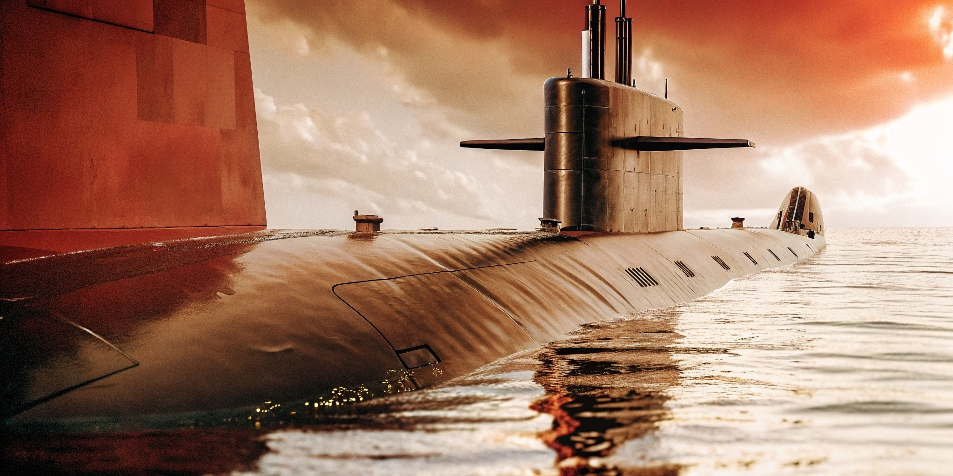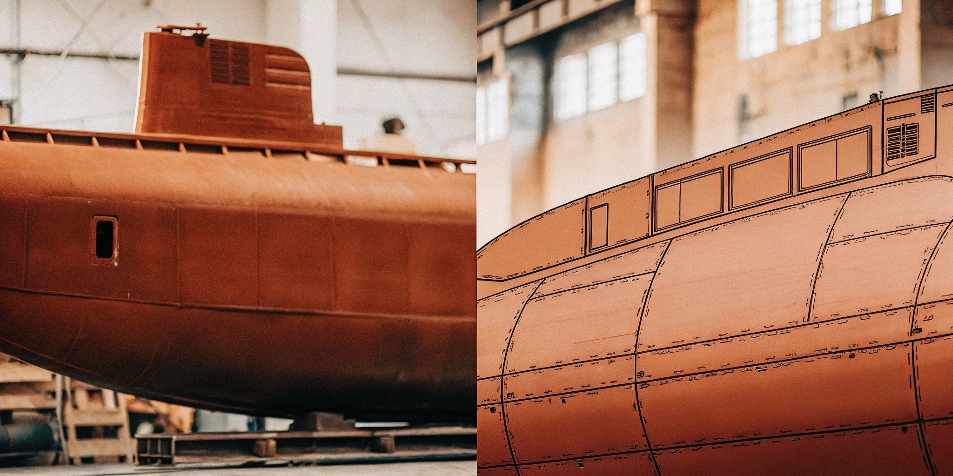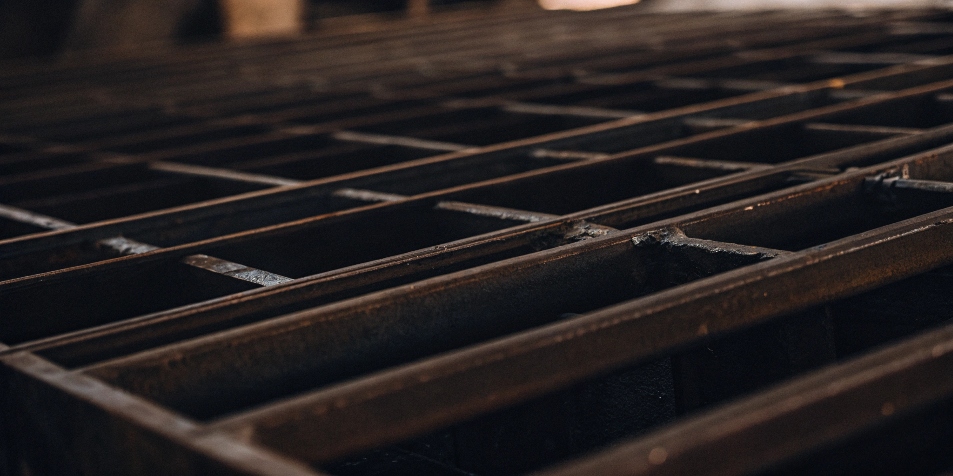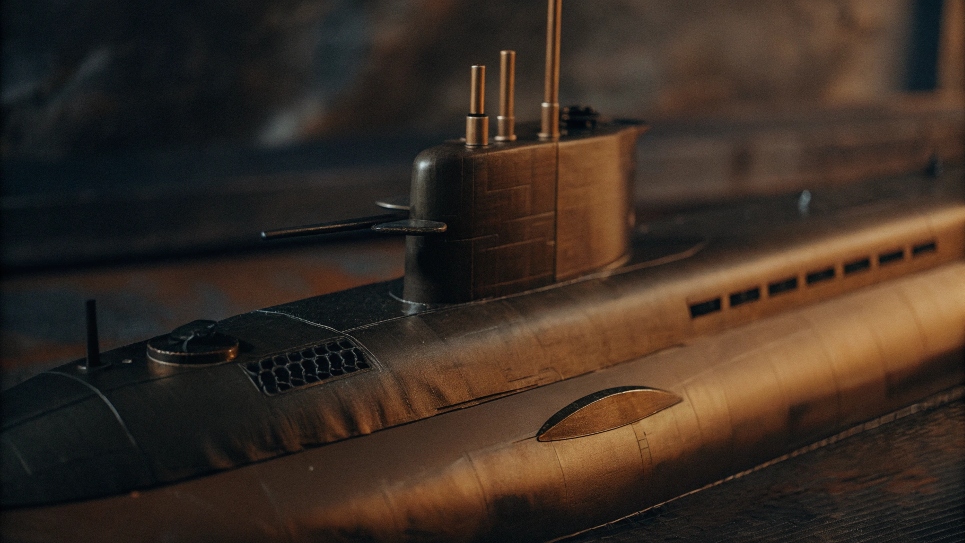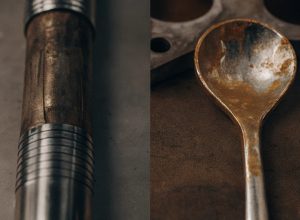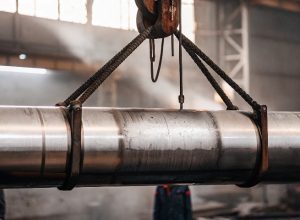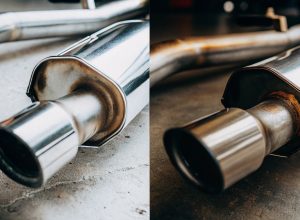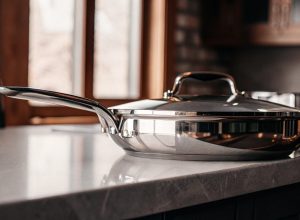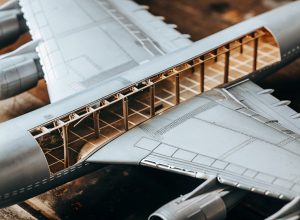Struggling to find clear answers about the materials in US submarines? It’s confusing. Let me give you the straightforward facts from an engineer’s perspective.
The United States Navy does not currently operate any submarines with full titanium pressure hulls. Instead, its fleet, including the Virginia and Ohio classes1, is primarily built from high-strength steel alloys. This choice is based on a strategic balance of cost, manufacturability, and proven performance.
The decision to use steel over titanium isn’t about capability, but about strategy. As a materials engineer, I know the "best" material on paper isn’t always the right choice for a large-scale, high-stakes application like a submarine fleet. A huge industrial system supports steel production, making it the most practical and reliable option. This choice ensures the Navy can build, maintain, and repair its fleet efficiently anywhere in the world. Let’s dive deeper into why this is the case.
Does the US have titanium submarines?
Have you heard rumors about secret US subs made of advanced titanium? It’s easy to get caught up in the mystery. Let’s look at the real story.
No, the US Navy does not have titanium-hulled combat submarines. While the US explored titanium for deep-submergence vehicles like the Alvin, its combat fleet has always prioritized high-yield steels like HY-80 and HY-1002. This focus has always been on balancing performance with practicality for a large fleet.
The choice to stick with steel was a deliberate strategic one, especially during the Cold War. While the Soviet Union famously built the Alfa-class submarines with titanium hulls, the US doubled down on what it did best: advancing steel metallurgy. I work with titanium every day, and I can tell you that while its strength is incredible, manufacturing it is a completely different challenge than steel. Forging and welding titanium requires specialized, controlled environments to prevent it from becoming brittle. The US military had already built a massive industrial base around crafting high-strength steel. Shifting this entire ecosystem to titanium would have been incredibly expensive and time-consuming. Instead, they perfected the use of HY-series steels, which gave them the deep-diving performance they needed without the extreme costs and manufacturing headaches of titanium.
| Feature | US Approach (Steel) | Soviet Alfa-class (Titanium) |
|---|---|---|
| Primary Material | High-Yield (HY) Steel | Titanium Alloy |
| Key Advantage | Cost-effective, proven manufacturing | Superior depth and speed |
| Main Drawback | Heavier than titanium | Extremely high cost, difficult to repair |
| Strategic Focus | Large, reliable, maintainable fleet | Technologically superior showcase vessels |
Why aren’t more submarines made out of titanium?
Titanium seems perfect for submarines, so why isn’t it the standard material? It’s a good question. The answer lies in the practical challenges of building something so large.
Titanium is not widely used for submarines because it is very expensive and difficult to work with. The process of turning raw titanium ore into usable metal plates is complex and uses a lot of energy. This makes building and maintaining a large fleet of titanium submarines too costly for most nations.
Let’s break down the main reasons. First is the cost. Titanium is not rare, but refining it is much more expensive than making steel. This cost difference becomes huge when you’re building a vessel that is hundreds of feet long. Second is manufacturing. Welding titanium is a delicate process. It must be done in an inert gas environment, like argon, to shield it from oxygen. If oxygen gets in, the weld becomes brittle and weak. Doing this perfectly on the massive scale of a submarine hull is a huge engineering hurdle. Steel welding, on the other hand, is a robust and well-understood process. I once worked with a product manager, Lisa, who wanted to use titanium for a chemical processing tank. On paper, it was the perfect choice. But when we explained the costs and the specialized fabrication needed, the project became impractical. A submarine is like that tank, but thousands of times bigger and more complex.
| Factor | High-Strength Steel | Titanium Alloy |
|---|---|---|
| Material Cost | Relatively low | Very high |
| Manufacturing | Standard, well-known processes | Complex, requires inert gas welding |
| Repairability | High (can be repaired at many ports) | Low (requires specialized facilities) |
| Strength-to-Weight | Good | Excellent |
| Corrosion Resistance | Good (with coatings) | Excellent |
What metal are US submarines made of?
So if they don’t use titanium, what exactly is the hull of a US submarine made of? They need something strong. The US Navy relies on proven, powerful materials for this job.
U.S. submarines are built using high-yield (HY) steel alloys, mainly HY-80 and HY-100. These materials offer a fantastic combination of strength, toughness, and good workability. This lets submarines dive deep and withstand enormous pressure while being practical to build and maintain for a large fleet.
The names "HY-80" and "HY-100" tell you their strength. The number represents the yield strength in thousands of pounds per square inch (ksi). So, HY-80 steel can withstand 80,000 psi before it starts to deform. This strength is critical for handling the crushing pressure of the deep ocean. But strength isn’t everything. These steels are also very tough, which means they can absorb energy and resist fracturing—a vital safety feature. The US Navy has been developing these steels for decades. Early submarines used High-Tensile Steel (HTS), but as the mission required deeper dives, the HY-series was born. The newest Seawolf-class submarines use the even stronger HY-100. In my work, material selection is key. You don’t just pick the strongest metal. You pick the one with the right balance of properties for the job. For the US Navy, HY-steels hit that perfect spot between performance, safety, and cost.
Can you make a submarine out of titanium?
After all this talk about cost and difficulty, is it even possible to build a whole submarine from titanium? The answer is a definite yes, and it has been done before.
Yes, you can build a submarine from titanium, and it has already been achieved. The Soviet Union’s Project 705 Lira3, which NATO called the Alfa-class, had a full titanium hull. These subs were incredibly fast and could dive deeper than their American rivals, proving the material’s potential.
The Alfa-class was an engineering marvel and a legend among material engineers like me. The titanium hull gave it amazing advantages. Its high strength-to-weight ratio allowed it to dive to depths that were thought to be safe from American torpedoes. The lighter hull also helped it achieve incredible underwater speeds, letting it outrun its pursuers. Another benefit was its low magnetic signature, which made it harder to track using some detection methods. However, the Alfa was also a cautionary tale. The cost to build each one was astronomical, even for the Soviet military. They were also a nightmare to maintain. The complex reactors and the specialized titanium hull made repairs so difficult that many of the subs had very short service lives. The Alfa-class proved that just because you can build something with a space-age material, it doesn’t mean you should. It taught the world that for a large military fleet, practicality often wins over raw performance.
Conclusion
American submarines use high-strength steel, not titanium. This is a deliberate choice based on balancing cost, manufacturability, and repairability, ensuring a powerful and practical fleet for global operations.

